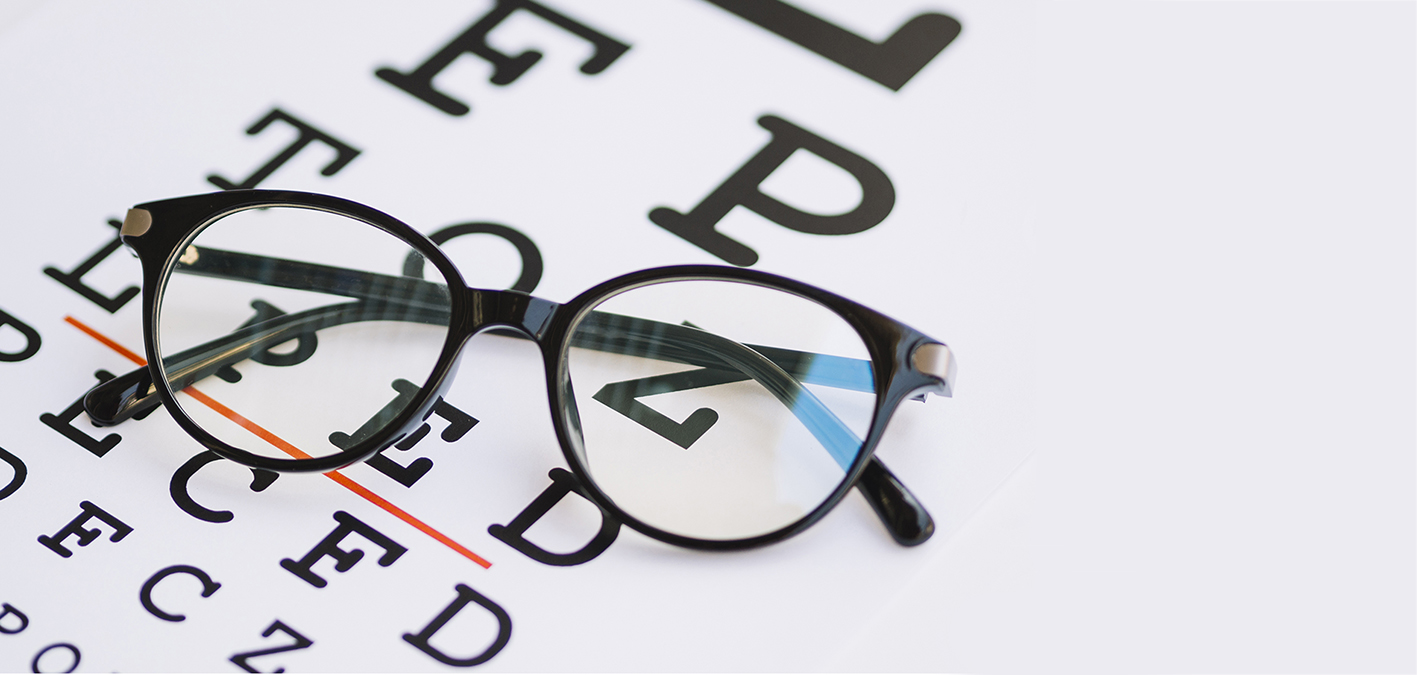What does "diopter" mean?
The refractive power is measured in diopters. A diopter is the ability of a lens to focus on an object located at infinity to within one meter (focal length). A normal-sighted eye has a refractive power of around 65 dioptres. Around two thirds come from the cornea and one third from the lens. In farsightedness, the deviation from normal refractive power is indicated with positive dioptres, nearsightedness is indicated with negative dioptres.
Emmetropia
In the normal-sighted eye, the focal point is exactly on the retina. All objects both near and far are clearly visible to the young person.
Myopia
In the myopic eye, the focal point is in front of the retina. Objects further away are perceived as blurred. Objects in the vicinity can be seen clearly. While the eye is usually almost spherical, it is “too long” in myopic people. Therefore, light rays that enter through the lens are bundled in front of the retina. Since the rays immediately dissipate again, a blurred image is created for the myopic.
Hyperopia
In the farsighted eye, on the other hand, the focal point lies behind the retina. The bundling of the incident light rays is not possible with sufficient strength. The eye is “too short”. The foreground appears out of focus. Far-sighted people do not see objects clearly in the distance or in the vicinity and therefore often suffer particularly badly from their ametropia.
Astigmatism
Ideally, the curvature of the cornea would be as uniform as that of a sphere. Often, however, their radii are different - e.g. B. rather egg-shaped. Then one speaks of a corneal curvature. The resulting astigmatism causes image distortions on the retina. Objects near and far appear distorted. Usually this ametropia does not appear alone, but is associated with short or clear vision. In the case of extreme and irregular corneal curvature (keratoconus) or even clouding of the cornea, only a corneal transplant, as has been successfully carried out for years at the University Eye Clinic Homburg using the excimer laser, can help.
Presbyopia
With increasing age, the ability of the eye lens to automatically adjust to different distances and thus to see the image clearly (accommodation) decreases in every person. From 40 to 45 years of age, most people with normal vision also need reading glasses in order to be able to see clearly at close range.
